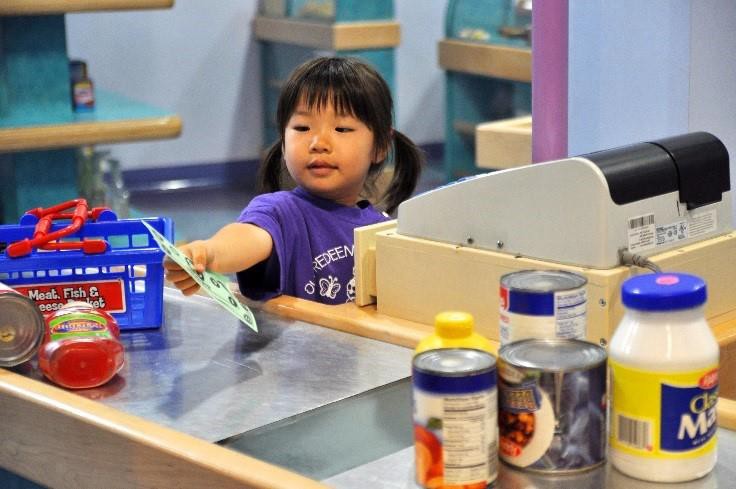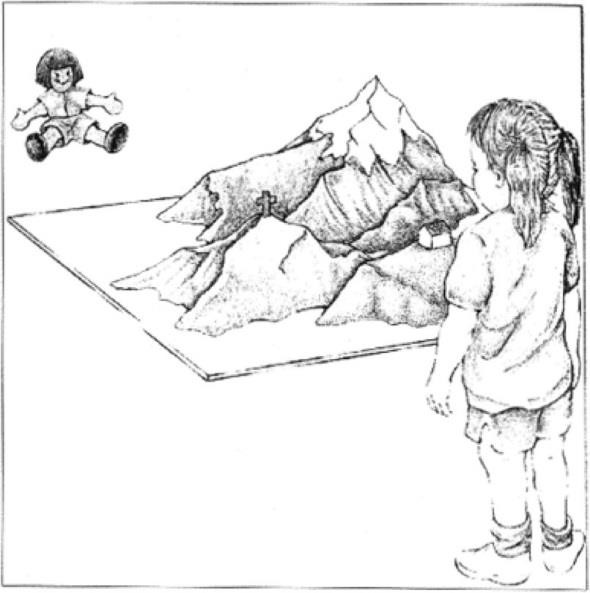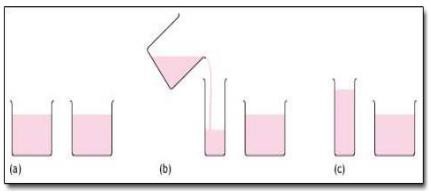55 Piaget’s Preoperational Intelligence
Piaget’s stage that coincides with early childhood is the preoperational stage. The word operational means logical, so these children were thought to be illogical. However, they were learning to use language or to think of the world symbolically. Let’s examine some of Piaget’s assertions about children’s cognitive abilities at this age.
Video reviews characteristics of children’s thinking in Piaget’s preoperational stage, including learning through play, egocentrism, and a lack of understanding of conservation or reversibility.
Pretend Play
Pretending is a favorite activity at this time. A toy has qualities beyond the way it was designed to function and can now be used to stand for a character or object unlike anything originally intended. A teddy bear, for example, can be a baby or the queen of a faraway land!

According to Piaget, children’s pretend play helps them solidify new schemes they were developing cognitively. This play, then, reflects changes in their conceptions or thoughts. However, children also learn as they pretend and experiment. Their play does not simply represent what they have learned (Berk, 2007).
Video provides brief examples of dramatic play, also known as pretend play.
Egocentrism
Egocentrism in early childhood refers to the tendency of young children to think that everyone sees things in the same way as the child. Piaget’s classic experiment on egocentrism involved showing children a 3-dimensional model of a mountain and asking them to describe what a doll that is looking at the mountain from a different angle might see. Children tend to choose a picture that represents their own view, rather than that of the doll. However, children tend to use different sentence structures and vocabulary when addressing a younger child or an older adult. This indicates some awareness of the views of others.

Video demonstrates Piaget’s three mountain task to access egocentrism, a characteristic of children’s thinking in the preoperational stage.
Syncretism
Syncretism refers to a tendency to think that if two events occur simultaneously, one caused the other. An example of this is a child putting on their bathing suit to turn it to summertime.
Animism
Attributing lifelike qualities to objects is referred to as animism. The cup is alive, the chair that falls down and hits the child’s ankle is mean, and the toys need to stay home because they are tired. Cartoons frequently show objects that appear alive and take on lifelike qualities. Young children do seem to think that objects that move may be alive but after age 3, they seldom refer to objects as being alive (Berk, 2007).
Classification Errors
Preoperational children have difficulty understanding that an object can be classified in more than one way. For example, if shown three white buttons and four black buttons and asked whether there are more black buttons or buttons, the child is likely to respond that there are more black buttons. As the child’s vocabulary improves and more schemes are developed, the ability to classify objects improves.[1]
Conservation Errors
Conservation refers to the ability to recognize that moving or rearranging matter does not change the quantity. Let’s look at an example. A father gave a slice of pizza to 10-year-old Keiko and another slice to 3-year-old Kenny. Kenny’s pizza slice was cut into five pieces, so Kenny told his sister that he got more pizza than she did. Kenny did not understand that cutting the pizza into smaller pieces did not increase the overall amount. This was because Kenny exhibited Centration, or focused on only one characteristic of an object to the exclusion of others.
Kenny focused on the five pieces of pizza to his sister’s one piece even though the total amount was the same. Keiko was able to consider several characteristics of an object than just one.
Because children have not developed this understanding of conservation, they cannot perform mental operations.
The classic Piagetian experiment associated with conservation involves liquid (Crain, 2005). As seen below, the child is shown two glasses (as shown in a) which are filled to the same level and asked if they have the same amount. Usually the child agrees they have the same amount. The researcher then pours the liquid from one glass to a taller and thinner glass (as shown in b). The child is again asked if the two glasses have the same amount of liquid. The preoperational child will typically say the taller glass now has more liquid because it is taller. The child has concentrated on the height of the glass and fails to conserve.[2]

Cognitive Schemas
As introduced in the first chapter, Piaget believed that in a quest for cognitive equilibrium, we use schemas (categories of knowledge) to make sense of the world. And when new experiences fit into existing schemas, we use assimilation to add that new knowledge to the schema. But when new experiences do not match an existing schema, we use accommodation to add a new schema. During early childhood, children use accommodation often as they build their understanding of the world around them.[3]
- Lifespan Development - Module 5: Early Childhood by Lumen Learning references Psyc 200 Lifespan Psychology by Laura Overstreet, licensed under CC BY 4.0 ↵
- Lifespan Development: A Psychological Perspective by Martha Lally and Suzanne Valentine-French is licensed under CC BY-NC-SA 3.0 ↵
- Child Growth and Development by Jennifer Paris, Antoinette Ricardo, & Dawn Rymond licensed under CC BY 4.0 ↵

